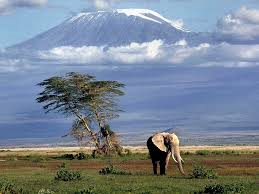following a request from the Radio Society of Kenya (RSK), Kenya state radio regulator, CAK (Communications Authority Kenya) advised the RSK that a new 60m allocation has been granted between 5275 kHz and 5450 kHz on a secondary basis. All modes are permitted with a maximum power of 400W PEP.
Tnx: Paul, G4MWO, 5Z4XB, 5Z4NU, VK3XXX, CAK
Kenya National Frequency Allocation Table (p.52)http://www.ca.go.ke/images/downloads/FrequencySpectrum/NationalFrequencyAllocation/The_National_Table_of_Frequency_Allocation_2017.pdf
Kenya is considered by many to be the safari epicentre of the world as the country contains some of the greatest varieties and concentrations of wildlife on Earth. Kenya hosts the “Big Five” which consists of the lion, elephant, rhinoceros, buffalo and leopard. The “Big Five” was a term coined by hunters to encompass the most difficult and dangerous animals to hunt as well as the most desired trophies.
Nature
UNESCO has listed three Natural World Heritage Sites in Kenya, they are Mount Kenya National Park, Mijikenda Kaya Forests and Lake Turkana National Park. Along with these World Heritage Sites are over fifty national parks and reserves that account for more than 17,000 square miles or 8% of Kenya’s total landmass. These areas include many different ecosystems like forests, wetlands, savannahs, marine and arid and semi-arid regions. There are 23 terrestrial national parks, 28 terrestrial national reserves, 4 marine national parks, 6 marine national reserves and 4 national sanctuaries. Parks offer complete protection of natural resources and the only activities within them are for tourism and research while reserves allow certain human activities under specific conditions (ie. fishing in a marine reserve).Along with the designated parks and reserves, Kenya Wildlife Services (KWS) also maintain a further 100+ field stations and outposts outside of the protected areas. These are incredibly important because much of Kenya’s wildlife lives outside of protected areas as they are not fully fenced. Wildlife therefore moves in and out looking for new pastures and water throughout the year. This can cause problems as the wildlife sometimes has interactions with people on private and community lands. To aid this, Kenya Wildlife Services works with communities to educate them on the effects of human/wildlife conflicts and to prevent such conflicts in the future. The main goals of the KWS are to enhance wildlife and visitor security, to minimise human/wildlife conflicts, to support community conservation initiatives and to complete research.
Wildlife
Kenya is famous for the Great Migration which witnesses millions of animals travelling through the Maasai Mara Reserve to the Serengeti in search of greener pastures. It is estimated that around 1.3 million wildebeest, 200,000 zebras and 18,000 eland antelope make the journey annually. Over 250,000 wildebeest die each year as a result of drowning, from general weakness, attacks by predators or from injury due to the stampede. Despite this massive loss, there are still nearly 400,000 calves born each year. The Mara River is considered to be one of the best places to truly experience the Great Migration in action.
Apart from the “Big Five”, Kenya is also home to gazelles, impalas, antelope, zebras, wildebeest, waterbucks and Maasai giraffes. Cat families include cheetahs, the smaller serval, civets and the caracal. Primates in Kenya include olive and yellow baboons as well as colobus, vervet and golden monkeys.
More than 1,135 bird species inhabit the country including the world’s largest bird, the ostrich, and one of the smallest, the sun bird. Interestingly, Kenya also hosts the “Little Five” which is made up of the ant lion, the elephant shrew, the rhinoceros beetle, the buffalo weaver and the leopard tortoise.
The entire World has the impession that Kenya is dominated by violence. The truth is different. Lets show the world their Beauties of Kenya … and they have many of them...
73 - Petr, OK1RP
.../-.-















